#202 Non-Newtonian Physics (Quantum Mechanics): Anti-matter, after Paul Adrein Maurice Dirac (1930-32) to account for the otherwise superfluous negative energy-dynamics of the electron predicted by his Relativistic Electron Theory (1928).
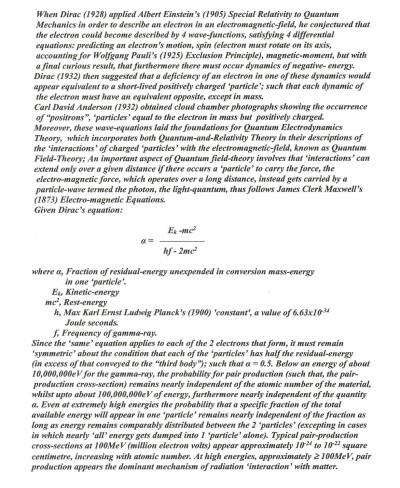
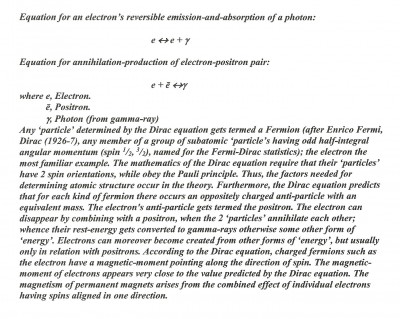
#203 Non-Newtonian Physics (Quantum Mechanics), Pauli Exclusion Principle: after Wolfgang Pauli (19250, to account for the observed patterns of light emission from atoms:
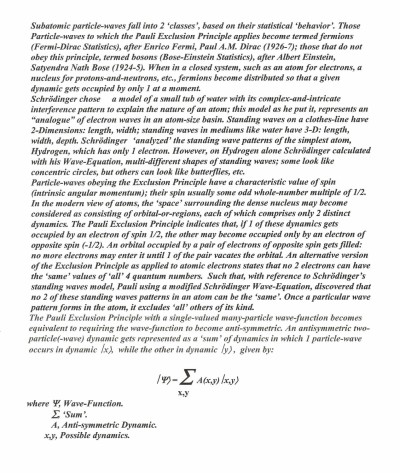
#204 Non-Newtonian Physics (Quantum Mechanics), Bohr Electron Shells, after Niels Henrik David Bohr (1913):
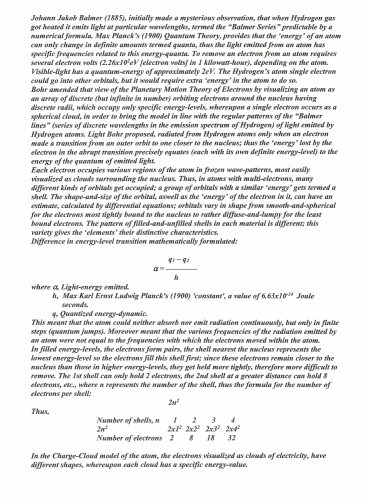
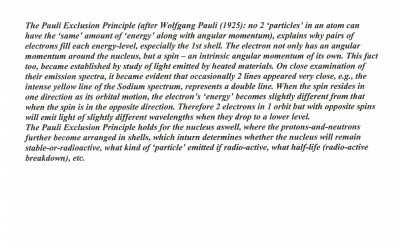
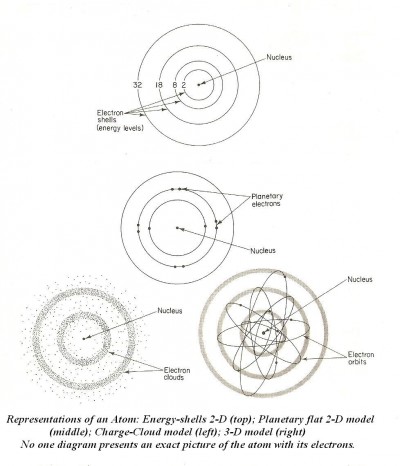
#205 Causal Contiguity Principle, after Gottfried Wilhelm Leibnitz (1686), David Hume (1739), Alfred Korzybski (1933).
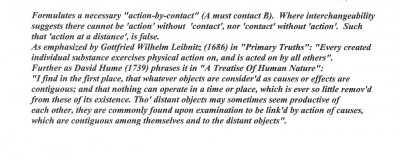
#206 Children need unconditional-love, structure(-or-routine).
#207 Children need creative-imaginative play to develop their non-verbal capacities (corollary of# 26)
#208 Discovery-learning goes on through life, but some people learn only what they believe they have too.
#209(a) Corollary of #68: Maltus Population Geometrical Increase Law, after Thomas Robert Maltus (1798)

#209(b) Corollary of #68: Maltus Subsistence Arithmetical Increase Law, after Thomas Robert Maltus (1798)

#210 Corollary of #6: Figure(s)(Foreground Objects)-Ground(Background Objects) become reversible (interchangeable), after Edgar John Rubin (1915)
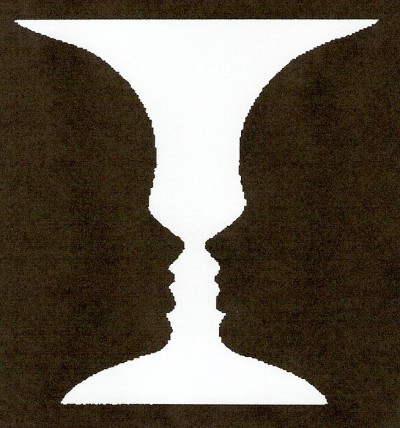 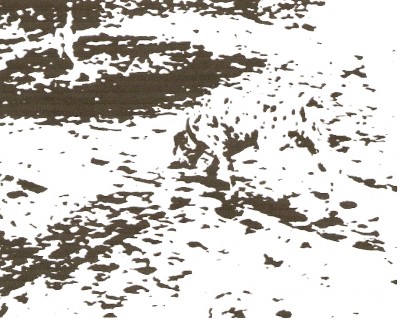
#211 "Lessons are the best part, when you learn from them, and if you don't learn from them...they usually comeback and try to teach you again", Terry Farrell, Dec 31, 2018.
#212(a) Gestalt Principles determining figure(s)-ground(s) organization, after Kurt Koffka (1935):
(1). Orientation: horizontal or-both vertical directions in patterns make 'figural' organization easier; e.g., the 'iron cross' gets seen in preference to the fan 'blades'.
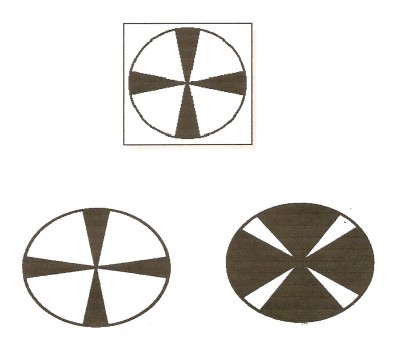
#212(b) Gestalt Principles determining figure(s)-ground(s) organization, after Kurt Koffka (1935):
(2). Relative size: the smallest becomes the 'figure'; e.g., the smaller cross appears the better 'figure'.
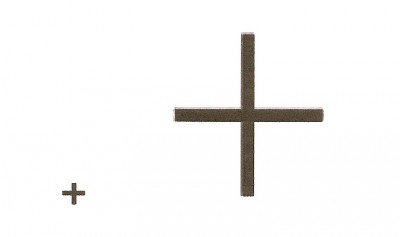
#212(c) Gestalt Principles determining figure(s)-ground(s) organization, after Kurt Koffka (1935):
(3). Enclosure: the part inside the angular contour rather than the outside, becomes the 'figure' though the latter remains smaller than the former; e.g., the 'star' takes up more area than the rest of the area within the circle, thence becoming the 'figure'.
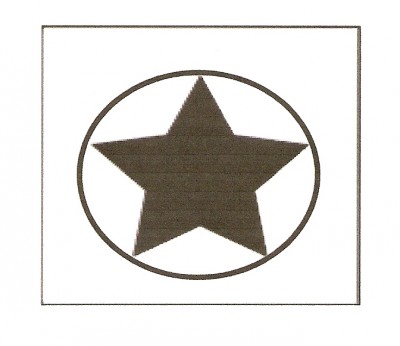
#212(d) Gestalt Principles determining figure(s)-ground(s) organization, after Kurt Koffka (1935):
(4). Density of energy: as small 'figure' on a large 'ground' means that the density of the process energy must become greater in the 'figure' than in the 'ground', proportional to the ratio between the 'ground' with the 'figure' area; further, it follows that these parts which have the greater articulation will become 'figures'.
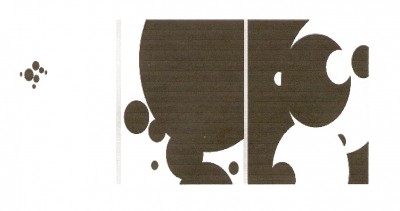
212(e) Gestalt Principles determining figure(s)-ground(s) organization, after Kurt Koffka (1935):
(5). Simplicity: the simpler the 'figure' the better the 'figure' to 'ground' relationship, e.g., 'if appearing regular'.
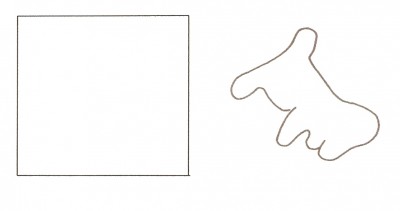
#213(a) The Gestalt Principles Of Perceptual Organization, after Max Wertheimer (1912), Kurt Koffka (1935):
(1). Proximity: 'figures' which appear near relative to others become grouped together. Thus has equivalence to Aristotle's (350 B.C.) principle of contiguity (Law of 'association'): things which occur near (else in contact with) to each other become 'associated'.
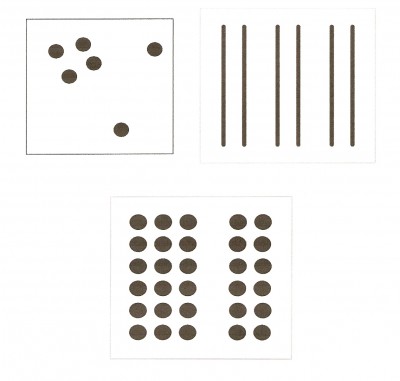
213(b) The Gestalt Principles Of Perceptual Organization, after Max Wertheimer (1912), Kurt Koffka (1935):
(2). Similarity: 'figures' which appear relative to others become grouped together. This has equivalence to Aristotle's (350 B.C.) principle of similarity (Law of 'association'): things which have similarities become 'associated'.
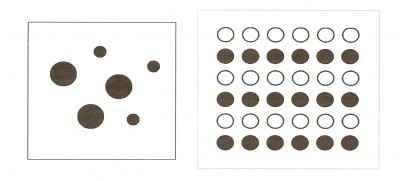
213(c) The Gestalt Principles Of Perceptual Organization, after Max Wertheimer (1912), Kurt Koffka (1935):
(3). Closure: incomplete 'figures' become completed by having their gaps ignored. This principle can more abstractly illustrate our wish for completeness, finality, perhaps even 'certainty', etc., in our work, relationships, etc. However, this has an equivalence to 'allness' such that, Aristotle's (350 B.C.) Law of Contraction: "Nothing can both be or not be" (stated by Alfred Korzybski (1933), from William Stanley Jevons' (1876) "The Elements Of Logic"), can have different 'philosophical' interpretations, as in 'all or not', not part.
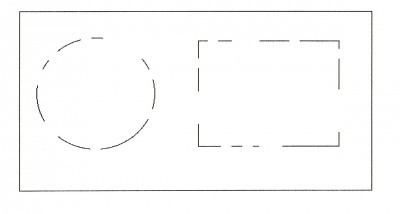
#213(d) The Gestalt Principles Of Perceptual Organization, after Max Wertheimer (1912), Kurt Koffka (1935):
(4). Continuity: otherwise referred to as common fate, joint destiny, common motion, etc. Paths, motions, etc., become followed if they appear smooth; uninterrupted yet without abrupt changes in directions; otherwise cohesive in motion; e.g., the 'figure' tends to get 'seen' as over-lapping rings, each with a continuous boundary, instaed of separate areas. However, this seems to involve 'imposed' 'Aristotelian' expectations of 'uniform' (;linear') motion else simplified paths. Therefore equivalent to Aristotle's (350 B.C.) principle of 'linearity'.
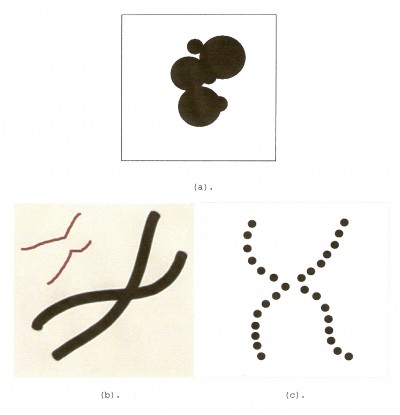
#213(e) The Gestalt Principles Of Perceptual Organization, after Max Wertheimer (1912), Kurt Koffka (1935):
(5). Pragnaz: otherwise known as the law of 'good figure', states that one perceives a pattern in such a way, as to make it the best pattern in: simplicity, 'regularity', 'symmetry', etc. This has equivalence to Aristotle's (350 B.C.) principle of 'symmetry': things 'are regular' such that the irregularities along with their 'causes' unimportant for understanding.
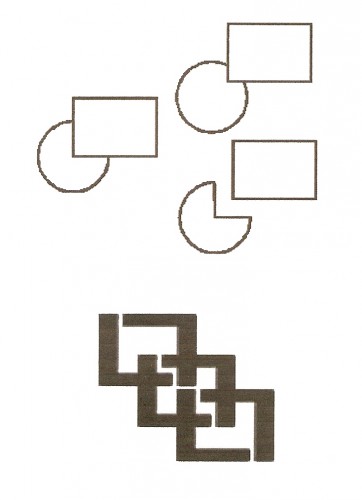
#214 Corollary of #86: Autonomy Of A Gestalt Principle:
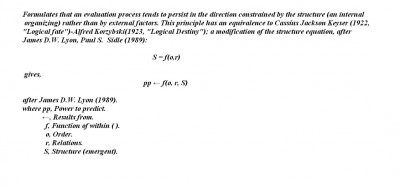
#215 Zeigarnik Effect, after Bluma Wulfovna Zeigarnik (1907):
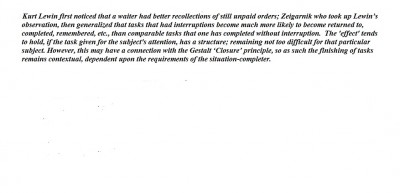
#216 Corollary of #30, Life-Space (Gestalt Psycho-Logics, Field-Theory), after Kurt Lewin (1935,1936):
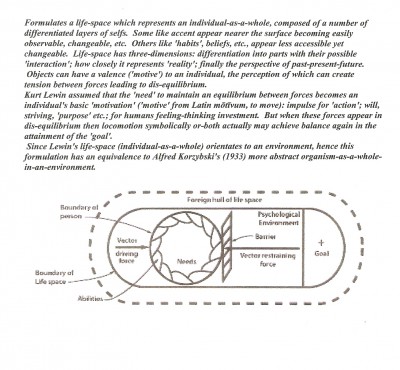
#217 Function-Structure become interchangeable:
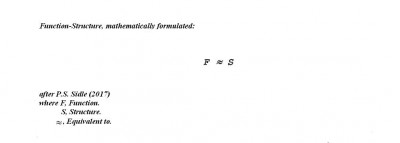
#218 We must not adapt to new situations before we know why-where-how, etc.
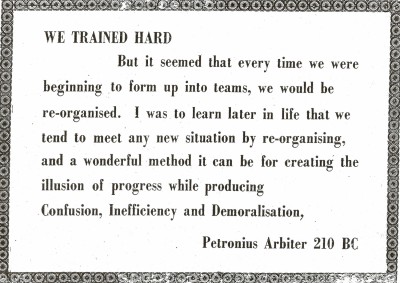
#219 Khalil Gibran (1883-1931): "Pain is the breaking of the shell that encloses your understranding".
#220 (a) Fick's Laws Of Diffusion, after Adolf Fick (1855): molar flux due to diffusion becomes proportional to the concentration gradient
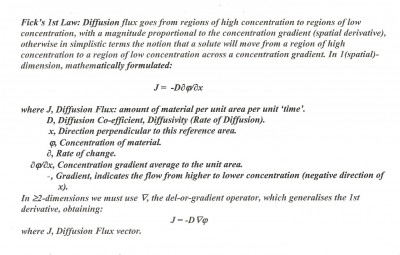
#220(b) Fick's Laws Of Diffusion, after Adolf Fick (1855): molar flux due to diffusion becomes proportional to the concentration gradient
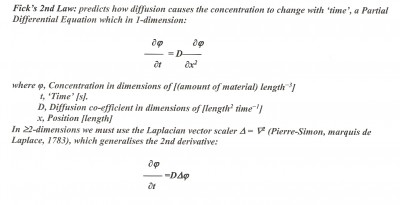
#221 Diffusion Pressure Deficit (DPD): net capacity of Plant cell to absorb water

#222(a) Osmotic Pressure Principle: solution will pass through a semi-permeable membrane (membrane permeable to solvent, blocks solute) from a less concentrated solute to a more concentrated solute via a gradient
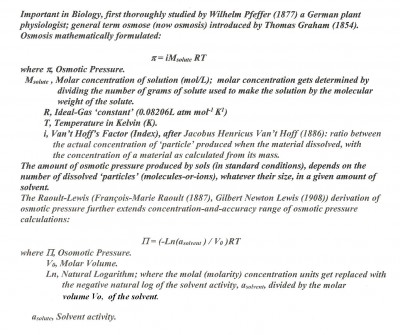
#222(b) Osmotic Pressure Principle: solution will pass through a semi-permeable membrane (membrane permeable to solvent, blocks solute) from a less concentrated solute to a more concentrated solute via a gradient
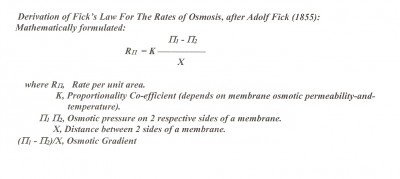
#223(a) Newtonian Systematization Of The Fundamental Gas Laws:
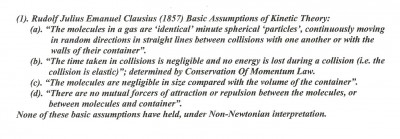
#223(b) Newtonian Systematization Of The Fundamental Gas Laws:
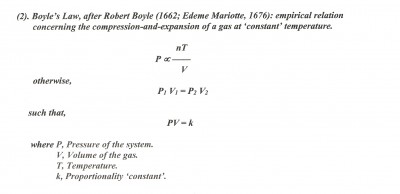
#223(c) Newtonian Systematization Of The Fundamental Gas Laws:
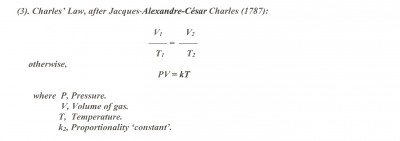
#223(d) Newtonian Systematization Of The Fundamental Gas Laws:
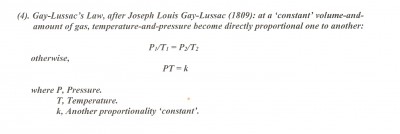
#223(e) Newtonian Systematization Of The Fundamental Gas Laws:

#223(f) Newtonian Systematization Of The Fundamental Gas Laws:

#223(g) Newtonian Systematization Of The Fundamental Gas Laws:
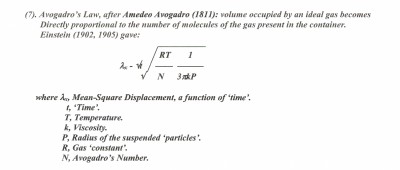
223(h) Newtonian Systematization Of The Fundamental Gas Laws:
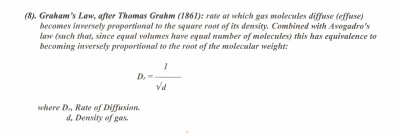
#223(i) Newtonian Systematization Of The Fundamental Gas Laws:

#223(j) Newtonian Systematization Of The Fundamental Gas Laws:
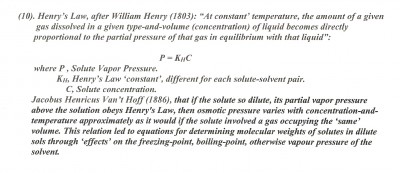
#224 Non-Newtonian Systematization Of The Fundamental Gas Laws:
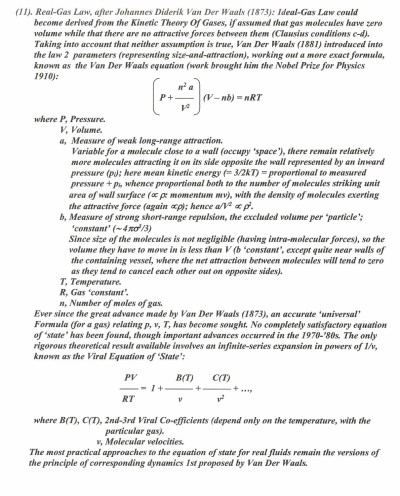
#225 Non-Newtonian Physics, Albert Einstein's (19050 Kinetic Theory Of Brownian Motion:

| 










